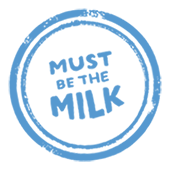Milk matters for our communities, our health, and our environment. The dairy farmers of New England work hard every day to produce a high-quality, healthy and nutritious product for us all to enjoy. They protect and preserve the beautiful open spaces throughout New England and support our local economies with their local products.

Nearly 100 percent of New England and New York dairy farms are family-owned and operated. New England farm families work every day to produce fresh, great tasting, wholesome dairy products. Hard work, pride, and stewardship have been passed down from generation to generation of dairy farmers. As the backbone of our communities, these dairy farmers support local economies and preserve the open spaces we know and love.
Milk is truly a local food and remains so, even as food supply chains have become longer and more complicated. The vast majority of the milk in New York and New England supermarkets is produced in the region by our dairy farmer neighbors. Over 99 percent of the milk produced on New England dairy farms is bottled or processed into cheese, butter, ice cream, and yogurt in New England or New York.
In New York and New England, the dairy industry has laid the groundwork for today’s growing local food movement. Generations of dairy farmers have supported local agriculture businesses and organizations like farm equipment dealers, banks, land trusts, and veterinary practices. It is these businesses and organizations that provide the foundation of support for the farm stands and CSAs that provide fresh and delicious fruits, vegetables, eggs, meat, and dairy products to a growing number of communities.
Dairy farmers are a key link in the crucial community and economic ties that connect businesses across the region, provide employment for thousands of families and help our local economies thrive in every season.
Many families in America are struggle with hunger, however. Milk is the most requested but least donated item according to food banks. On average, food banks are only able to provide one gallon of milk per person per year and at least 68 gallons are needed in order to meet the recommendations outlined by The Dietary Guidelines for Americans. Dairy farmers in New England and across the country want to bridge the milk gap and so they have joined forces with Feeding America on The Great American Milk Drive. Help those facing hunger get the nutrients they need from milk by donating to the milk drive.
 A tall glass of milk provides a unique combination of nine essential nutrients that play a key role in keeping our hearts ticking and our bones and muscles strong and healthy. The 2015 Dietary Guidelines for Americans and dietary experts recommend three servings of milk, cheese, or yogurt each day.
A tall glass of milk provides a unique combination of nine essential nutrients that play a key role in keeping our hearts ticking and our bones and muscles strong and healthy. The 2015 Dietary Guidelines for Americans and dietary experts recommend three servings of milk, cheese, or yogurt each day.
- Dairy foods are an excellent source of the essential nutrients including calcium, protein, and vitamin D, that work together to protect our bones. Three servings of dairy every day can help keep bones healthy now and reduce your risk of osteoporosis later in life.
- Calcium does double duty! Potassium, magnesium, and calcium, all found in dairy foods, may be key ingredients in maintaining a healthy blood pressure.
- Milk has just the right mix of carbohydrates, protein, and electrolytes to help refuel, build muscle, and re-hydrate your body after a workout. Dairy is an important part of a fit and healthy lifestyle and a nutrient-rich balanced diet. Reduced-fat, low-fat, and fat-free dairy foods can help people get the nutrients they need, while managing their calories and weight in a healthy way.
- Lactose intolerant? The good news is you don’t have to give up your favorite dairy foods! Lactose-free milk, aged cheeses, which are naturally lower in lactose, and yogurt can help you get the nutrients you need without the discomfort.
- Did you know by the age of 20, 85 to 90 percent of adult bone mass is already formed? Even more reason to make sure your kids are enjoying three servings of dairy a day (and yes, chocolate milk counts too) to form healthy habits and build the strongest and healthiest bones possible.
 New England and New York dairy farms are the nucleus of the region’s agriculture economy, managing over 50 percent of the cropland in five of New England’s six states, 5,000 farms and 2.5 million acres of land in New York, and stewarding thousands of acres of woodlands, wetlands, and pasture. Dairy farmers preserve and protect our region’s iconic working landscape—its rolling hills, farmhouses, barns, and silos—for residents and tourists as well as agriculture. These farmers continue a tradition of environmental stewardship while implementing sustainable innovations that benefit the environment and the dairy herd.
New England and New York dairy farms are the nucleus of the region’s agriculture economy, managing over 50 percent of the cropland in five of New England’s six states, 5,000 farms and 2.5 million acres of land in New York, and stewarding thousands of acres of woodlands, wetlands, and pasture. Dairy farmers preserve and protect our region’s iconic working landscape—its rolling hills, farmhouses, barns, and silos—for residents and tourists as well as agriculture. These farmers continue a tradition of environmental stewardship while implementing sustainable innovations that benefit the environment and the dairy herd.
On New England and New York dairy farms, the number one priority is animal care. A great deal of science and technology goes into assuring the diet, health and clean, comfortable living quarters for dairy cows. Did you know that a cow’s average body temperature is 102 degrees? This means that farmers are constantly innovating the design of barns to save energy, such as by using natural ventilation, rather than electric fans, to keep the herd cool.
New cooling technology is also used to chill milk as it travels from the milking machine to the bulk tank where it is stored. Plate coolers use two pipes—one contains milk and the other contains cold water—that run alongside one another. The water absorbs heat from the milk, which means that less energy is needed to cool the milk after it reaches the bulk tank. The warm water is a real treat for dairy cows in the winter, and research shows that they drink more of the warm water than ice-cold water.
Dairy farmers are not only using energy efficiently, they are beginning to generate electricity — such as from cow manure, wind and the sun (solar energy). In addition to producing enough milk each day to fill six one-gallon jugs, an average dairy cow produces enough manure to power two, 100-watt light bulbs for 24 hours per day. Bacteria can digest cow manure to produce methane gas, which is similar to propane or natural gas. Methane gas can then be used to power a generator to make electricity for the farm, as well as homes and businesses.
In order to run successful farms, dairy farmers have to be scientists, veterinarians, nutritionists, midwives, and energy experts. New York and New England dairy farmers are continually creating new ways to care for their dairy herds and our environment.

